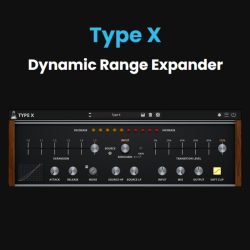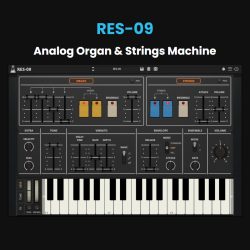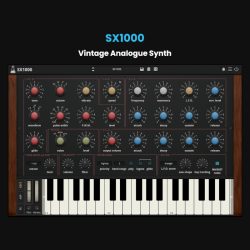by AudioThing
Springs is a plugin that features a collection of vintage spring reverbs paired with an authentic Baxandall EQ emulation.
Springs features emulations from 19 types of spring reverbs, ranging from a long 6-spring pipe to a tiny battery-powered single-spring unit.
We have used a combination of convolution and modelling to recreate the vintage character of each reverb.
Spring reverbs were usually paired with tone stacks from guitar amplifiers.
Springs features one of the most iconic and unique sounding tone stack equalizers: the Baxandall EQ.
A classic Baxandall tone stack usually features just the bass and treble bands, but we have also added a Mid band (with control over the Q).
$39.00 $69.00

A pair of Accutronics spring tanks housed in a length of plastic drainpipe. Circa 1970-79.

Iconic Spring Reverb made in the USA.
Released in 1960.

Compact rack-mount Japanese Spring Reverb with a warm vintage sound. Released in 1985.

Classic American Spring Reverb. Circa 1970-79.

Classic Japanese Tape Echo with Reverb Tank. Released in 1974.

Precursor of the legendary RE-201 Space Echo.
Released in 1973.

Very rare German 4-channel tube amplifier with built-in reverberation. Circa 1970-79.

Used by many artists as the “secret weapon” to add depth and character to vocals.

Vintage Japanese spring reverb, branded as “Echo Unit”. Dating from the late 60s or early 70s.

Germanium-powered spring reverb made for vintage Stereo/Tuners. Released in 1964.

Modern eurorack spring reverb module.

Vintage Japanese spring reverb. Also rebranded as AM-534. From the 70s.

Very small, battery powered, solid-state reverberation amplifier. From the late 70s or early 80s.

A small guitar head amplifier, very noisy, and with a very basic spring reverb. Released in 1975.

The smallest spring reverb ever, it sounds like a boomy echo. Circa 1970-79.

Vintage Synthi AKS Spring Reverb Tank. From Hainbach’s Studio

Modern Spring Reverb Tank. Mono / Stereo

Classic American Guitar Amplifier. Released in 1985.

Classic American Guitar Amplifier. Released in 1999.
The Baxandall EQ is a classic type of EQ, mostly found in guitar amps, and usually limited to just a single tone control or two bands (bass and treble).
We have added a third band (mid with Q control) to shape the reverb sound further.
One important characteristic of the Baxandall EQ is that the bands interact with each other.
This may seem like an unwanted behavior, but it’s one of the reasons why the Baxandall EQ curves are smooth and musical.


By clicking on the wrench tool button you can open the editor window.
Springs uses a combination of convolution and modeling to recreate each spring reverb.
With the editor, you can edit the impulse response of the reverb directly.
This can be useful to fine-tune the size/decay of the reverb, but can also be used to completely mangle the source (check the experimental presets).
While with the Baxandall EQ you can shape the sound of the mix (dry+wet) or just the wet signal, with the Bandwidth control you can filter the input signal that goes into the spring emulation.
Some springs have a boomy low end, some are too bright and boingy.
By limiting the bandwidth of the signal you can dampen these characteristics.


A spring reverb is an electromechanical device that uses transducers/pickups with steel springs in order to simulate the reflections of a reverb.
The input signal is passed through a transducer to one or multiple springs, the vibrations are then captured by an output transducer on the opposite side.
Using multiple springs with different sizes and different thicknesses can create a more interesting and rich reverb sound.
You must be logged in to post a review.



Reviews
There are no reviews yet.